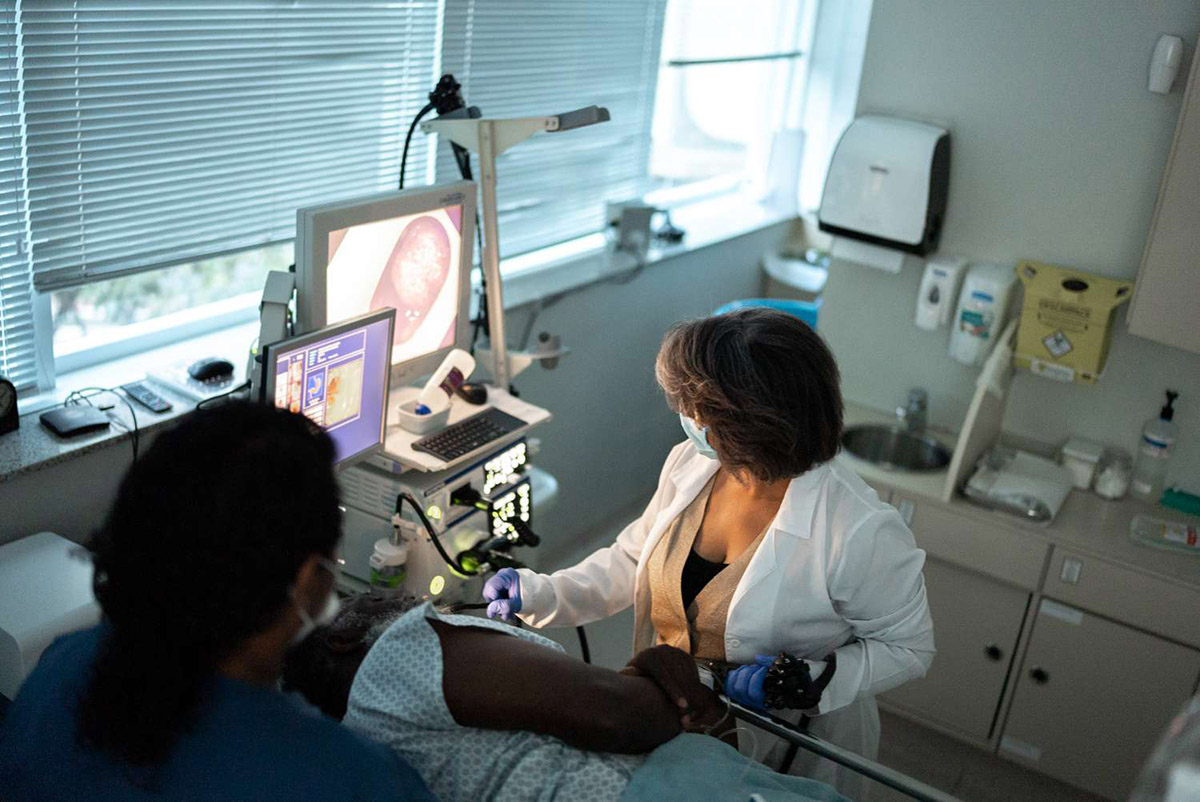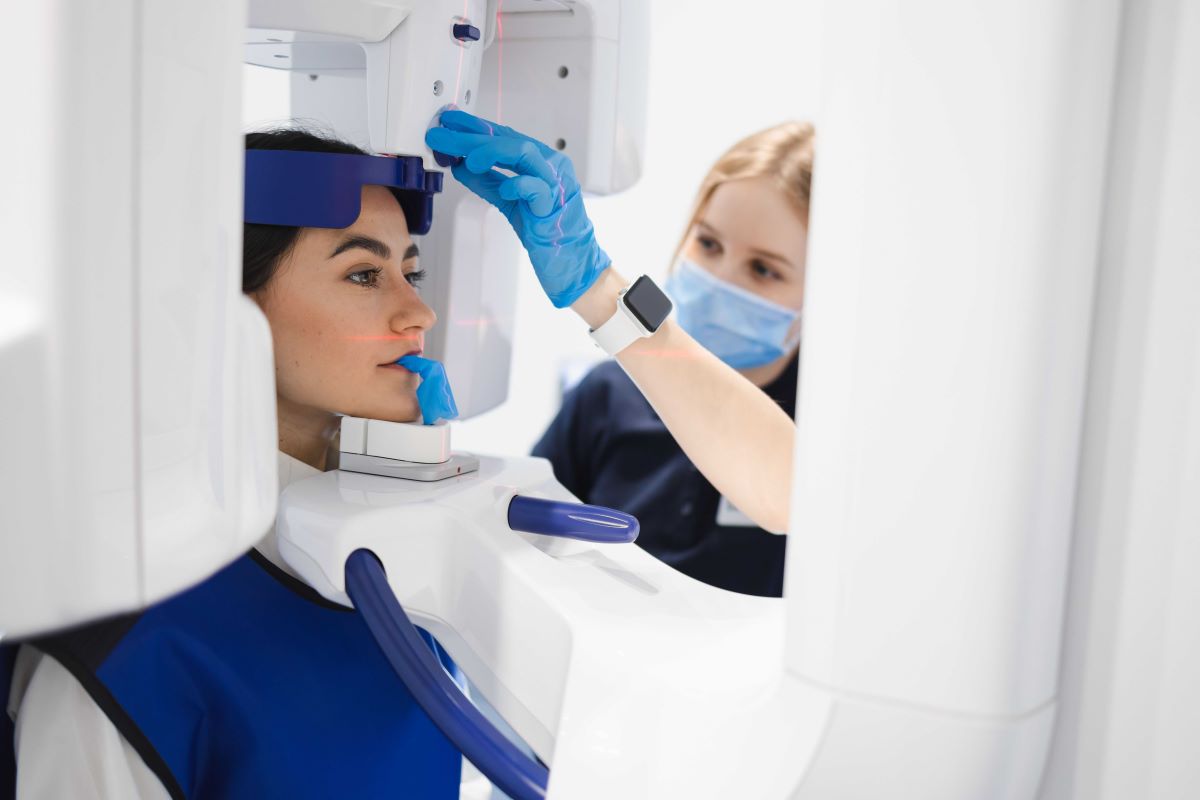

Finance
How Much Is An X-Ray Without Insurance?
Published: November 17, 2023
Explore the cost of X-rays without insurance and discover affordable finance options to cover medical expenses. Make informed financial decisions for your healthcare needs.
(Many of the links in this article redirect to a specific reviewed product. Your purchase of these products through affiliate links helps to generate commission for LiveWell, at no extra cost. Learn more)
Table of Contents
Introduction
Imagine you’ve been experiencing persistent pain in your knee, and your doctor recommends getting an X-ray to diagnose the cause of your discomfort. However, you don’t have health insurance, and you’re worried about the exorbitant cost of medical procedures. The thought of pricing an X-ray without insurance might be overwhelming, but understanding the factors that affect the cost can help you navigate your options and find a solution that works within your budget.
An X-ray is a medical imaging technique that allows healthcare professionals to examine the inside of your body, providing valuable insights into bone fractures, joint injuries, and other medical conditions. While X-rays are incredibly useful for diagnosis, the cost can be a barrier for individuals without insurance coverage. However, it’s important to remember that there are options available to make X-rays more affordable and accessible.
In this article, we will explore the average cost of X-rays without insurance and delve into the various factors that can influence these costs. We will also discuss alternative options for affordable X-ray services and financial assistance programs that can help alleviate the financial burden. By understanding the nuances of X-ray costs and exploring the available resources, you can make informed decisions about your healthcare and seek necessary medical attention without breaking the bank.
So, if you’ve been wondering how much an X-ray without insurance would cost and how to make it more affordable, let’s dive in and explore the world of X-ray expenses and potential solutions.
Understanding the Cost of X-Rays
Before we delve into the specifics of X-ray costs without insurance, it’s essential to have a fundamental understanding of how the costs are determined. Several factors contribute to the overall price of an X-ray procedure, including:
- The type of X-ray: Different types of X-rays require varying levels of technology and expertise. For example, a simple X-ray of a single bone may be less expensive than a more complex X-ray of a joint or organ.
- Diagnostic facility charges: The cost of using a diagnostic facility, such as a hospital or an imaging center, can significantly impact the overall cost of an X-ray procedure without insurance.
- Geographical location: The cost of healthcare services, including X-rays, can vary depending on your geographical location. Urban areas with a higher cost of living may have higher healthcare costs compared to rural areas.
- Additional services or tests: In some cases, additional services or tests, such as contrast dye injections or multiple X-ray views, may be necessary to obtain a comprehensive diagnosis. These additional procedures can add to the overall cost.
- Provider charges: Different healthcare providers may charge different rates for X-ray procedures. It’s important to compare prices and explore different providers to find the best possible deal.
It’s crucial to note that these factors can vary significantly, and it’s advisable to research and gather information specific to your location and situation. Understanding these underlying factors will help you make informed decisions about the affordability and feasibility of X-ray procedures without insurance.
Next, let’s explore the average cost of X-rays without insurance to give you a better idea of what to expect in terms of expenses.
Factors Affecting X-Ray Costs
There are several key factors that can significantly impact the cost of X-rays without insurance. Understanding these factors will allow you to assess the potential expenses and explore ways to mitigate the financial burden. Here are some important factors to consider:
- Diagnostic facility charges: The choice of where you get your X-ray can greatly affect the cost. Hospitals and imaging centers often have different pricing structures, so it’s important to compare costs and explore different options.
- Type of X-ray: The complexity and type of X-ray procedure required can influence the cost. A simple X-ray of a single bone is generally less expensive than a more complex X-ray that involves multiple views or involves contrast dye injections.
- Geographical location: Healthcare costs can vary depending on your location. Areas with a higher cost of living may generally have higher healthcare costs, including X-rays. However, it’s worth noting that prices can also vary within the same region, so conducting thorough research and comparing prices is essential.
- Provider charges: Different healthcare providers may have different pricing structures. It is advisable to compare prices from multiple providers to find the best option for your budget.
- Additional services or tests: In some cases, additional services or tests may be required alongside an X-ray to get a comprehensive diagnosis. These can include contrast dye injections, multiple views, or follow-up tests. These additional procedures can add to the overall cost.
It’s crucial to inquire about the specific costs associated with your X-ray procedure before moving forward. By considering these factors and gathering as much information as possible, you can better prepare yourself for the financial obligations that come with an X-ray without insurance.
Next, let’s explore the average cost of X-rays without insurance to give you an idea of what you may expect to pay.
Average Cost of X-Rays Without Insurance
The cost of an X-ray without insurance can vary significantly depending on several factors, including the type of X-ray, the location of the medical facility, and the provider charges. While it is challenging to provide an exact figure, given the variation in costs, we can provide a general idea of the average expenses you might encounter.
On average, a basic X-ray without insurance can cost anywhere from $100 to $1,000 or more. For example, a straightforward X-ray of a single bone is likely to be on the lower end of the cost spectrum, while a more complex X-ray, such as one involving multiple views or contrast dye injections, may cost more.
Factors such as the location and the specific healthcare provider can also influence the cost. In certain regions or areas with a higher cost of living, X-ray prices tend to be higher. Additionally, different providers may have varying pricing structures, so it’s essential to compare prices and explore different options.
It’s worth noting that the cost of an X-ray is only one component of the overall expenses you may incur. Additional costs may include consultation fees, radiologist fees for interpreting the X-ray results, and any follow-up tests or treatments required based on the X-ray findings.
While these costs may seem daunting, it’s important to remember that there are options available to make X-rays more affordable and accessible, even without insurance.
In the next section, we will discuss alternative options for affordable X-ray services that can help you mitigate the financial burden.
Options for Affordable X-Rays
While the cost of X-rays without insurance can be a significant financial burden, several options are available that can help make these procedures more affordable:
- Community and non-profit clinics: Many communities have clinics that offer discounted or low-cost healthcare services, including X-rays, to individuals without insurance. These clinics often operate on a sliding fee scale based on income, making them a viable option for those on a tight budget.
- Public hospitals: Public hospitals often provide services to individuals regardless of insurance coverage. They may offer discounted rates or financial assistance programs for individuals who cannot afford the full cost of the procedures.
- Imaging centers: Some imaging centers offer competitive pricing for self-pay patients. It’s worth reaching out to different centers and comparing their rates to find the most affordable option for your X-ray needs.
- Negotiation: In some cases, healthcare providers may be open to negotiating the cost of X-ray procedures, especially for self-pay patients. It’s important to communicate your financial situation and explore the possibility of a reduced rate or a payment plan.
- Telemedicine services: With the advancement of technology, telemedicine services are becoming more common. Some providers offer remote X-ray interpretation services, allowing you to take the X-ray at a lower-cost facility and have it reviewed by a qualified radiologist remotely.
It’s important to be proactive in exploring these options and contacting healthcare providers to inquire about their self-pay rates and any available discounts or financial assistance programs. By taking the time to research and compare prices, you can find a more affordable option for your X-ray needs.
In the next section, we will discuss financial assistance programs that can help alleviate the cost of X-rays without insurance.
Financial Assistance Programs for X-Ray Costs
For individuals without insurance coverage, several financial assistance programs exist that can help alleviate the cost burden of X-rays. These programs are designed to provide support and ensure that individuals have access to necessary healthcare services. Here are some common financial assistance programs to consider:
- Medicaid: Medicaid is a government-sponsored program that provides healthcare coverage for low-income individuals and families. Eligibility for Medicaid varies by state, but if you qualify, it can help cover the cost of X-rays and other medical services.
- Charity Care: Many hospitals and healthcare facilities have charity care programs in place to provide free or reduced-cost care to individuals who demonstrate financial need. These programs typically require individuals to submit documentation of their income and expenses to determine eligibility.
- Non-profit organizations: There are various non-profit organizations dedicated to helping individuals access affordable healthcare services. These organizations may offer financial assistance specifically for diagnostic imaging procedures, including X-rays.
- Patient assistance programs: Some pharmaceutical companies and medical device manufacturers offer patient assistance programs that can help cover the costs associated with diagnostic procedures, including X-rays. These programs typically have specific eligibility criteria, so it’s important to check with the respective companies for more information.
- State and local assistance programs: Depending on your location, there may be state or local assistance programs available to help individuals without insurance cover the cost of healthcare services. These programs can vary widely, so it’s advisable to explore the resources specific to your area.
It’s essential to conduct thorough research and reach out to these programs to determine your eligibility and the level of financial assistance they can provide. Social workers or patient advocates at hospitals and clinics can often assist in identifying and applying for these programs.
Additionally, it’s important to remember that medical providers and imaging centers may have their own financial assistance programs or payment plans in place. Don’t hesitate to ask about these options when discussing the cost of X-rays.
By utilizing these financial assistance programs, you can significantly reduce the cost burden of X-rays and ensure that you receive the necessary diagnostic services without straining your finances.
In the next section, we will discuss how to seek a cost estimate for X-rays without insurance.
Seeking a Cost Estimate for X-Rays
Before undergoing an X-ray procedure without insurance, it is essential to seek a cost estimate to have a clear understanding of the expenses involved. Here are some steps you can take to obtain a cost estimate:
- Contact healthcare providers: Reach out to different healthcare providers, such as hospitals, clinics, and imaging centers, to inquire about their self-pay rates for X-ray procedures. Provide them with the necessary details about the type of X-ray you require to get an accurate estimate.
- Ask for itemized billing: When requesting a cost estimate, ask for an itemized breakdown of the charges involved in the X-ray procedure. This will help you understand what each component contributes to the overall cost.
- Inquire about any discounts or financial assistance: While discussing the cost estimate, inquire about any available discounts or financial assistance programs that the provider may offer. This could help reduce the cost or make it more affordable for you.
- Consider alternative facilities: In addition to traditional healthcare providers, consider checking prices at standalone imaging centers or community clinics. These facilities often have lower overhead costs, which can translate into more affordable pricing for self-pay patients.
- Compare costs: Once you have obtained cost estimates from several providers, compare the costs along with the quality of service. Keep in mind that the cheapest option may not always be the best, so consider factors such as reputation, expertise, and accessibility when making your decision.
By following these steps and investing time in gathering information, you can have a better understanding of the estimated costs and make an informed decision about where to get your X-ray done.
Keep in mind that the cost estimate you receive may not be the final cost, as additional factors or complications might arise during the procedure. It’s important to discuss any potential additional charges and have a clear understanding of the total financial obligations before moving forward.
Next, let’s conclude our discussion on X-ray costs without insurance.
Conclusion
Getting an X-ray without insurance can be a daunting prospect, given the potential costs involved. However, by understanding the factors that affect X-ray costs, exploring affordable options, and seeking financial assistance programs, you can navigate the process more effectively.
Factors such as the type of X-ray, location, provider charges, and additional services can all impact the cost of an X-ray procedure. It’s important to gather cost estimates from different healthcare providers, compare prices, and inquire about any available discounts or financial assistance programs.
Options for affordable X-rays include community clinics, public hospitals, imaging centers with competitive pricing, negotiating with healthcare providers, and utilizing telemedicine services. Additionally, financial assistance programs like Medicaid, charity care, non-profit organizations, and patient assistance programs can help alleviate the financial burden.
When seeking a cost estimate for X-rays, be sure to contact healthcare providers, ask for itemized billing, inquire about discounts, consider alternative facilities, and thoroughly compare costs and services to make the best decision for your needs and budget.
While the cost of X-rays without insurance may be a concern, it’s important not to delay necessary medical care due to financial constraints. Explore the available resources, reach out to healthcare providers, and seek assistance if needed to ensure that you receive the diagnostic services you require.
Remember, your health should always be a priority, and there are options available to make X-rays more affordable and accessible, even without insurance.
By being proactive, informed, and resourceful, you can navigate the world of X-ray costs without insurance and make decisions that prioritize your well-being.














